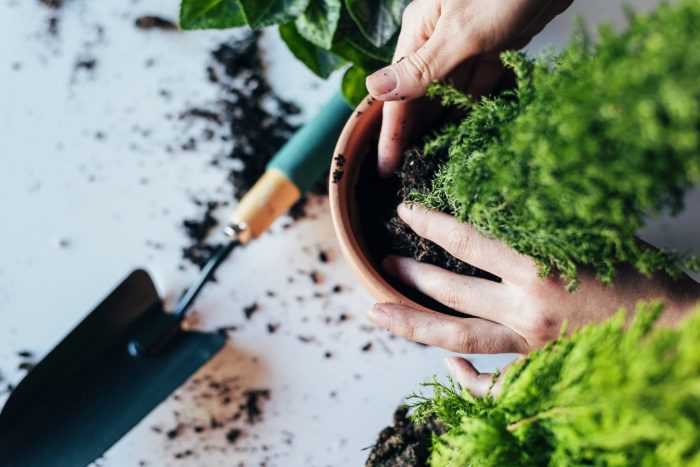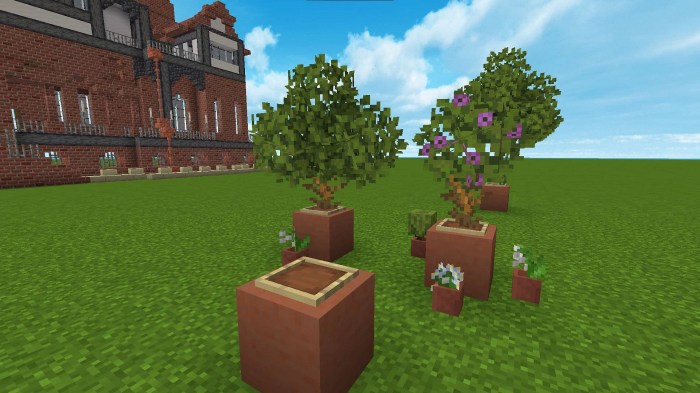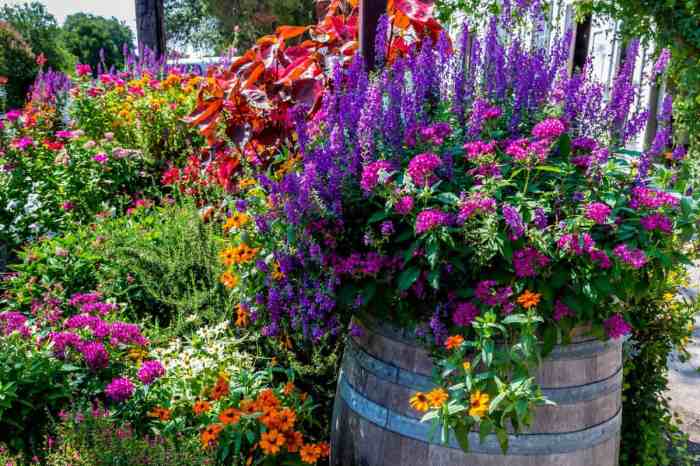Discover the best plants to pot and transform your indoor and outdoor spaces into vibrant oases. From easy-care varieties to statement-making specimens, this guide offers a comprehensive exploration of the most popular plants for potting.
Whether you’re a seasoned plant enthusiast or a budding gardener, this guide provides valuable insights into selecting, caring for, and showcasing your potted plants.
Popular Plants for Potting

Potted plants have become increasingly popular in recent years, offering a touch of greenery and freshness to homes and offices alike. With a wide variety of plants available, choosing the right ones for your potting needs can be overwhelming. This article provides a comprehensive guide to the most popular plants suitable for potting, categorized by their growth habits and specific care requirements.
Upright Plants
- Snake Plant (Sansevieria trifasciata):Known for its upright, sword-like leaves, the snake plant is a low-maintenance plant that thrives in low light conditions and infrequent watering.
- ZZ Plant (Zamioculcas zamiifolia):With its glossy, deep green leaves, the ZZ plant is an extremely resilient plant that can tolerate drought and low light levels.
- Fiddle-Leaf Fig (Ficus lyrata):Characterized by its large, fiddle-shaped leaves, the fiddle-leaf fig adds a tropical touch to any space and prefers bright, indirect light.
Trailing Plants
- Pothos (Epipremnum aureum):Known for its trailing vines and heart-shaped leaves, pothos is a versatile plant that can thrive in both low and bright light conditions.
- String of Pearls (Senecio rowleyanus):This unique plant features long, trailing stems adorned with pea-like beads and prefers bright, indirect light.
- Spider Plant (Chlorophytum comosum):With its long, arching leaves and spiderettes (baby plants), the spider plant is an easy-to-care-for plant that prefers bright, indirect light.
Cascading Plants
- Burro’s Tail (Sedum morganianum):This succulent plant features cascading stems covered in plump, finger-like leaves and prefers bright, direct light.
- String of Bananas (Senecio radicans):With its long, trailing stems and plump, banana-shaped leaves, the string of bananas is a unique plant that prefers bright, indirect light.
- Haworthia (Haworthia spp.):These compact succulents form rosettes of thick, fleshy leaves and prefer bright, indirect light.
Potting Techniques and Considerations: Best Plants To Pot

Successful potting involves understanding the specific needs of different plant species and applying the appropriate techniques. Factors such as pot size, drainage, and soil composition play crucial roles in plant health and growth.
Pot Size
Choosing the right pot size is essential. Overcrowded roots can restrict growth, while excessive space can lead to waterlogging. The general rule is to select a pot that is slightly larger than the root ball, allowing for about 1-2 inches of growth space around the sides and bottom.
Drainage
Adequate drainage is paramount for preventing root rot. Pots should have drainage holes at the bottom to allow excess water to escape. If drainage holes are not present, consider drilling them or using a pot with a built-in drainage system.
Soil Composition, Best plants to pot
The type of soil used for potting depends on the plant’s specific requirements. Well-draining, nutrient-rich soil is generally recommended. Soil amendments such as perlite, vermiculite, or compost can improve drainage and aeration.
Choosing the Right Pot and Soil Mix
When selecting a pot, consider the material, size, and drainage capabilities. Clay pots are porous and allow for evaporation, while plastic pots retain moisture better. For specific plants, consult reputable sources to determine the ideal pot material and soil composition.
Plant Care and Maintenance
Maintaining the health and beauty of potted plants requires proper care and attention. Regular watering, fertilization, and pruning are essential to keep them thriving.
Watering
Watering is crucial for potted plants. The frequency depends on the type of plant, pot size, and environmental conditions. Generally, water when the top inch of soil feels dry to the touch. Avoid overwatering, as it can lead to root rot.
Fertilizing
Fertilizing provides essential nutrients for potted plants. Use a balanced fertilizer diluted to half strength during the growing season. Avoid over-fertilizing, as it can burn the roots.
Pruning
Pruning removes dead or diseased leaves and stems, promotes healthy growth, and controls plant size. Use sharp, clean shears to make clean cuts. Prune regularly, especially during the growing season.
If you’re looking to add some greenery to your home, choosing the right plants to pot is essential. Whether you’re a seasoned plant parent or a novice, you’ll want to consider factors like light requirements, watering needs, and overall care.
However, even the healthiest plants can develop spots, which can be a sign of pests, diseases, or nutrient deficiencies. If you notice spots on your plants, it’s important to identify the cause and take appropriate action to prevent further damage.
For a comprehensive guide to identifying, preventing, and treating plant spots, refer to Spots on Plant: A Comprehensive Guide to Identification Prevention and Treatment . By understanding the causes of plant spots, you can take proactive measures to keep your potted plants healthy and thriving.
Common Problems
Potted plants can face various problems, including:
- Pests:Aphids, mealybugs, and spider mites can infest potted plants. Treat with insecticidal soap or neem oil.
- Diseases:Fungal and bacterial diseases can affect potted plants. Use fungicides or bactericides as needed.
- Nutrient deficiencies:Yellowing leaves can indicate nutrient deficiencies. Fertilize regularly to provide essential nutrients.
- Root rot:Overwatering can lead to root rot. Repot the plant in fresh soil and reduce watering frequency.
Tips for Healthy Plants
- Choose the right pot:Select a pot with drainage holes and a size appropriate for the plant.
- Use quality potting mix:Use a well-draining potting mix specifically designed for potted plants.
- Provide adequate light:Most potted plants require bright, indirect light. Adjust placement as needed.
- Monitor temperature:Potted plants prefer warm temperatures. Avoid exposing them to extreme heat or cold.
- Repot when necessary:As plants grow, they may need to be repotted into a larger container.
Decorative Uses of Potted Plants

Potted plants offer a versatile and aesthetically pleasing way to enhance both indoor and outdoor spaces. Their ability to add color, texture, and life to any setting makes them a popular choice for decorators and homeowners alike.
When using potted plants for decoration, it is important to consider the overall style and ambiance of the space. For a modern or minimalist look, choose plants with clean lines and simple shapes, such as succulents, cacti, or snake plants.
Whether you’re a seasoned plant parent or just starting your indoor greenery journey, potting the right plants can make all the difference. From the lush greenery of ferns to the vibrant blooms of orchids, there’s a wide array of options to choose from.
To help you navigate the world of indoor plants, check out Discover the Allure of Indoor Plant Stores: A Guide to Greenery and Decor . This comprehensive guide offers expert tips on selecting the best plants for your space, creating stunning arrangements, and caring for your indoor oasis.
With the right plants in your pots, you can transform your home into a sanctuary of natural beauty and tranquility.
For a more traditional or eclectic style, opt for plants with more elaborate foliage, such as ferns, palms, or flowering plants.
When it comes to choosing the best plants to pot, there are many factors to consider. But if you’re looking for a plant that is both beautiful and easy to care for, the Ribbon Fern is a great option. This fern is known for its long, flowing leaves that add a touch of elegance to any room.
And because it’s a low-maintenance plant, it’s perfect for busy people who don’t have a lot of time to spend on gardening. To learn more about this beautiful plant, check out Ribbon Fern: An Enduring Beauty Unveiled . This article provides all the information you need to know about the Ribbon Fern, including its care and maintenance tips.
Whether you’re a seasoned gardener or just starting out, the Ribbon Fern is a great choice for your home or office.
Creating Attractive Plant Arrangements
Creating attractive plant arrangements is an art form that can transform any space. One way to achieve a visually appealing display is to group plants of different heights and textures together. For example, you could place a tall, leafy plant in the back, a medium-sized plant with colorful foliage in the middle, and a small, trailing plant in the front.
When it comes to choosing the best plants to pot, there are many factors to consider, including the amount of light your space receives, the size of your pot, and your personal style. If you’re looking for a plant that will add a touch of greenery and elegance to your home, consider hanging plants . These plants are perfect for adding a touch of nature to any room, and they can be easily cared for, making them a great choice for busy people or those who don’t have a lot of experience with plants.
Whether you’re looking for a trailing plant to add a touch of whimsy to your living room or a lush fern to purify the air in your bedroom, there’s a hanging plant out there to suit your needs.
Another way to create interest is to use different types of containers. For example, you could mix and match clay pots, ceramic planters, and woven baskets to create a unique and eclectic look.
Benefits of Using Potted Plants for Decoration
In addition to their aesthetic appeal, potted plants offer a number of benefits for both indoor and outdoor spaces. They can help to improve air quality, reduce stress, and boost creativity. Studies have also shown that being around plants can help to improve mood and well-being.
Potted plants are a versatile and affordable way to add beauty and life to any space. Whether you are looking to create a modern or traditional look, there is a potted plant that is perfect for you.
Special Considerations for Potted Plants

Potting plants offers numerous benefits, but certain considerations are crucial for ensuring their success. Different plant types have unique requirements and challenges when potted, necessitating tailored care and techniques.
Plants Well-Suited for Potting
Numerous plant species thrive in pots, both indoors and outdoors. For indoor potting, popular choices include peace lilies, snake plants, and pothos, known for their adaptability and tolerance of low light conditions. Outdoor potting options include petunias, marigolds, and geraniums, which offer vibrant blooms and attract pollinators.
Challenges of Potting Specific Plant Types
While many plants thrive in pots, some types present unique challenges. Succulents and cacti, for instance, require well-draining soil and infrequent watering to prevent root rot. Edible plants, such as tomatoes and peppers, need ample sunlight, regular fertilization, and support structures to grow successfully.
Overcoming Potting Challenges
Overcoming potting challenges requires understanding the specific needs of each plant type. For succulents and cacti, use a cactus mix or create a custom blend with sand or perlite for drainage. Water sparingly, allowing the soil to dry out completely between waterings.
Edible plants benefit from rich, well-drained soil, regular feeding, and adequate sunlight. Providing trellises or stakes for support can also enhance their growth and productivity.
Final Review
By following the tips and advice presented in this guide, you can create stunning plant displays that bring life, color, and tranquility to your surroundings. Embrace the joy of potting plants and elevate your living spaces to new heights.
Essential FAQs
What are the most popular plants for potting?
Some of the most popular plants for potting include succulents, cacti, ferns, peace lilies, and spider plants.
How do I choose the right pot for my plant?
Consider the size of your plant, its root system, and the material of the pot. Clay pots are porous and allow for good drainage, while plastic pots retain moisture better.
How often should I water my potted plants?
The frequency of watering depends on the type of plant, the size of the pot, and the environment. Check the soil moisture regularly and water when the top inch or two feels dry.